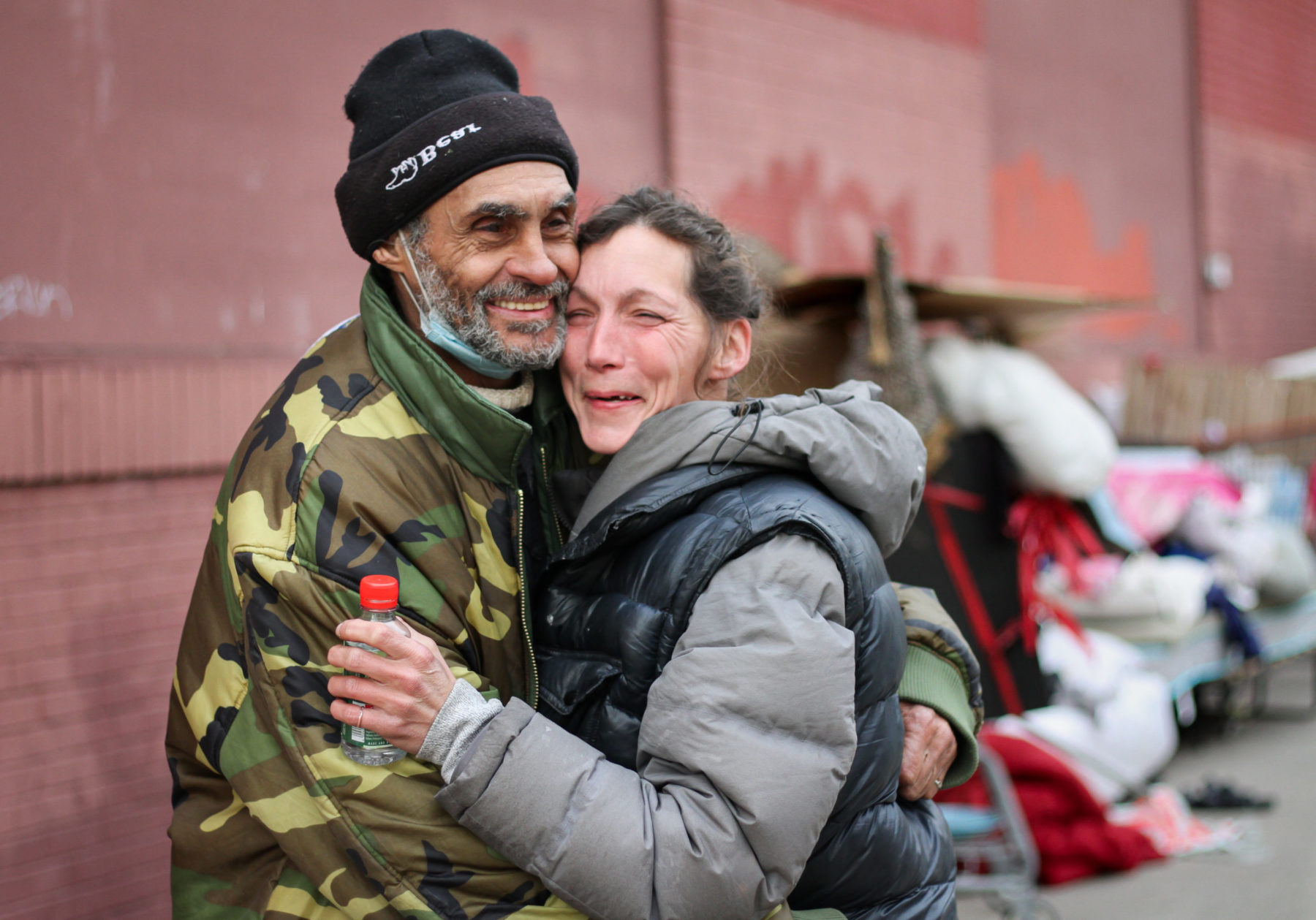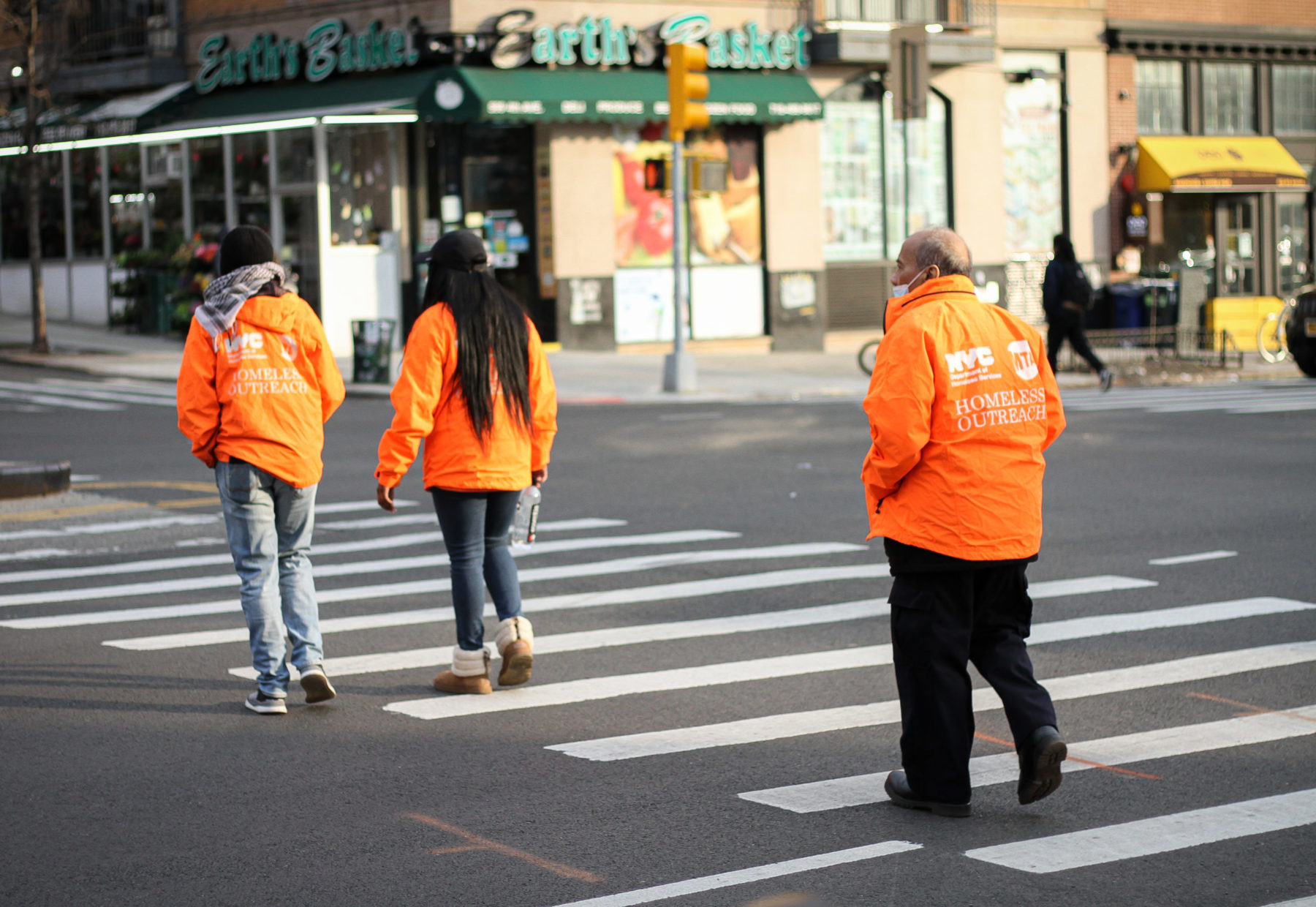
At around 8:00 a.m. on March 30, Debra and Angel woke up to police officers demanding they leave their makeshift shelter under the Prospect Expressway in Brooklyn, New York. Sanitation workers broke up and discarded the structure, while an outreach team from the Department of Homeless Services promised to get the pair into the coveted Safe Haven shelters.
“They threw everything, all our stuff, they threw in the garbage,” Angel said. “And then what happened? Look, we’re still waiting here.”
The outreach workers said they’d be back in three hours, but by 5:30 p.m., they still hadn’t returned to help relocate Debra and Angel, who asked that their last names be withheld due to privacy concerns. As the sun began to set, Angel hauled a mattress and other belongings back beneath the overpass, setting up a spot to sleep for the night.
Mayor Eric Adams said on March 25 that city agencies would clear homeless encampments and encourage their inhabitants to turn to the city’s shelter system, building on a similar initiative to sweep the subways.
At a press conference on Wednesday, the mayor told reporters that the city had cleared 239 of 244 sites it had targeted. Despite an initial emphasis on an April 1 deadline, Adams said the clearances will be part of an ongoing campaign.
The push has attracted intense media attention, including national coverage, bringing New York’s encampments suddenly into the spotlight.
The clusters of makeshift structures have for years been a quieter part of discussions about homelessness here than on the West Coast where tent cities and the unhoused have become almost synonymous.
Unlike California’s cities, New York guarantees a right to shelter and hosts approximately 50,000 people in its municipal facilities each night. Per the last official census, which advocates say is an undercount, 2,376 unhoused New Yorkers survive outside the shelter system at any given time. They do so having typically rejected the system for fear — or firsthand experience — of theft, violence and mistreatment.
Despite the emphasis Adams has placed on this clearance campaign in recent days, advocates stress these kinds of sweeps are nothing new.
City records obtained by the Safety Net Project of the Urban Justice Center show that similar “street sweeps” occurred at a rate of a few dozen a month during Mayor Bill de Blasio’s administration. They even ratcheted up to roughly 900 a month at one point last summer, which outpaces even the figures under Adams’ leadership these past two weeks.
That context has led to a sense that the new mayor’s initiative was partly about public relations.
“I’m not sure that this is actually as substantial a policy change as it seems,” said Eric Goldfischer, an academic who researches encampments. “But it’s definitely a rhetoric change.”
“The mayor is trying to make a grand gesture,” said Joshua Goldfein, a staff attorney with the Legal Aid Society’s Homeless Rights Project.
Goldfein said that “pushing people out of an encampment without having their agreement to move [to a shelter] only results in them finding a new spot to set up.”
Indeed, the mayor told reporters later that day that although city teams had intervened at 239 encampments, only five people from them had accepted shelter.

Many of the 239 sweeps, including a particularly well-documented one, have come ahead of nights when temperatures dropped to well-below freezing, creating life threatening conditions for people surviving on the streets.
“There’s no compassion, they were like a SWAT team,” Debra said of the team that roused her and her husband.
She came to New York several years ago, wanting to spare her family the pain of knowing she has terminal bone cancer. Leaning on the cane that she used to stand, Debra said she came to New York to die.
She said that little felt new about the city’s latest intervention. “They’ve been harassing me [to move] for two years straight.”
A major obstacle to the mayor’s plan, according to advocates like Goldfein, is a lack of beds in Safe Haven shelters, which are designed to help chronically street homeless individuals. Those shelters tend to offer more privacy than traditional facilities, as well as support services onsite and low barriers to entry.
Adams announced during a ribbon cutting ceremony on March 29 that facilities accounting for 350 beds will open in the very near future, as the city fulfills a project begun under de Blasio to create 490 new Safe Haven beds.
While the ceremony had a tone of optimism, the timeline as to when these services will actually be available is less clear.
The new Bronx shelter that was the site of the ceremony has not yet begun accepting clients. According to an employee of the site, they do not yet know when they will be able to start filling beds because of pending paperwork.
Without the additional beds that new shelters can provide, advocates are concerned that the current bed availability will not be able to accommodate the people affected by the sweeps.
A recent report from the Coalition of the Homeless released noted that the city currently has approximately 1,500 safe haven beds — nearly all of which are occupied every night. Data from DHS’s daily report shows around 1,350 beds in use at the time of the latest sweeps.
Debra and Angel testified to the challenge of finding a Safe Haven placement. Debra said she’d refused when the police had previously offered her a spot in a nearby women’s shelter.
“I was already at that shelter. I got beat up at that shelter. If you can give me a different shelter it’s a different thing.”
Debra said she’d be glad to go to a Safe Haven and had been trying to get set up with one for a year, long before outreach workers showed up to offer one Wednesday morning.
Four hours after the time outreach staff said they’d back, Angel said, “Look, we’re still waiting.”
About the author(s)
Danielle Dawson is a multimedia reporter at the Columbia Graduate School of Journalism, covering social justice issues and policy.



